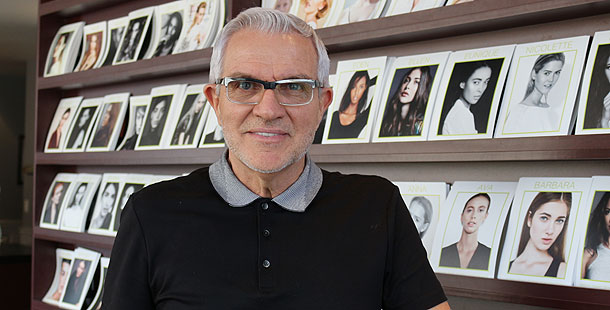
MODEL MAN: Rosedale’s Elmer Olsen plays a big role in launching the modelling careers of many Canadian girls, but admits there was no one quite like Judy Welch.
Judy Welch discovered Monika Schnarre right here in midtown
“We have this expression, Christy [Turlington] and I: We don’t wake up for less than $10,000 a day.”
Those iconic words, spoken by Canadian supermodel Linda Evangelista and shared with Vogue writer Jonathan Van Meter are a cornerstone of fashion pop culture.
And Evangelista, among many other models, has her roots in midtown Toronto, through the late Judy Welch’s Rosedale modelling agency at 21 Roxborough St. West.
Another discovery by Welch, died in 2011, was Monika Schnarre.
The busy mom to year-old son Bode Badger, who shared her modelling experiences with me via email, admitted Evangelista’s words were a little embarrassing.
“I think her quote was an unfortunate one,” she wrote. “When many people are out in the world struggling financially — it’s important not to flaunt your success.”

That aside, Schnarre was a part of the era that helped spawn the word supermodel, all thanks to Welch.
During the late ’80s and early ’90s it was tough to not hear about catwalk legends Evangelista, Turlington, Cindy Crawford, Naomi Campbell and Sports Illustrated staples like Kathy Ireland, Elle MacPherson and Stephanie Seymour.
Hell, it was the era of the supermodel, one Schnarre called “a wonderful time to be witness to.”
But outside of Welch, where was midtown’s role in the fashion industry? I had to dig deeper with World Mastercard Fashion Week hitting the T-Dot Oct. 20–25.
Enter Elmer Olsen of Rosedale, owner of Elmer Olsen Model Management.
He told me that Toronto is a hotspot for talent agents.
“We have agents from all over the world flying here looking for the next superstar, because Canadian girls are so wonderful to work with, and so professional,” he said. “And also the mix of cultures in Canada gives them a very interesting look.”
And there is optimism the supermodel will return, though not to the heights attained in the early ’90s.
Olsen points as evidence to the September issue of American Vogue magazine, which features nine girls on its cover.
“There’s a whole big article in it about models making a comeback, about these girls on the cover, about all the Instagram photos they shot,” he said. “It’s a major coup that they had these models.”
Modern supermodels like Cara Delevigne, Alessandra Ambrosio and Lily Aldridge have benefited from attention on social media.
But Fashion Week is about more than tweets and likes.
“Toronto Fashion Week is really amazing and brilliant for a new girl to get experience in learning what it’s like to go into hair and makeup, what it’s like to walk the runway, to do a major show,” Olsen said. “It’s great grooming ground for these girls before they walk for Calvin Klein or Christian Dior.”
Schnarre said she loves the event, but adds there are some kinks in the fabric that need to be ironed out.
While Toronto Fashion Week is great for the city much like TIFF or Luminato, she says, it is very expensive for designers to show their collections, so effort is needed “to make it more accessible for those that are just starting out and/or struggling.”
“[But] midtown Toronto,” she says, “is bustling with energy when the shows are on!”

